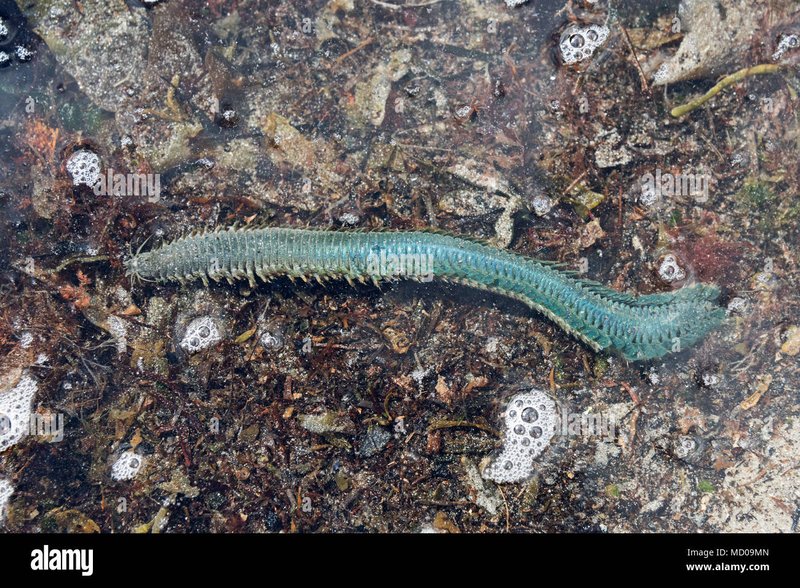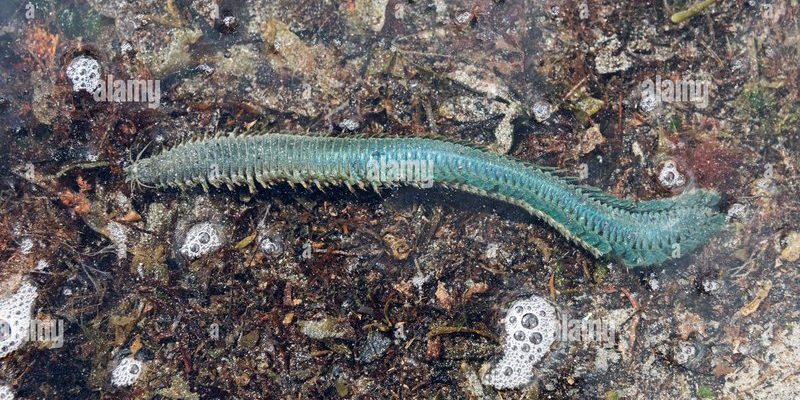
The Nereis virens, commonly known as the sandworm or ragworm, is an essential species in many marine ecosystems. It plays a crucial role in the food chain, serving as a snack for fish and other predators. However, distinguishing it from other similar species can be tricky. Let’s dive deeper into the unique challenges you’ll face when identifying this fascinating creature in the wild.
Understanding Nereis Virens: What Makes It Unique?
Identifying the Nereis virens starts with understanding its unique physical features. This worm can grow up to 40 centimeters long and is known for its long, segmented body. Each segment has bristle-like structures called chaetae, which help with movement and navigation through sand or mud. Imagine it as a tiny, flexible submarine gliding effortlessly through its underwater environment.
The coloration of Nereis virens can vary widely—from green to brown to reddish hues—making it blend seamlessly into the sand or seaweed. This natural camouflage is one reason why spotting them can be difficult. Picture walking along a beach, and you see a colorful ribbon, but it’s just a piece of seaweed. The Nereis virens can easily be overlooked if you’re not paying attention!
Another notable feature is its head, which has two pairs of sensory feelers. These can feel like tiny antennae, helping the worm navigate and sense its surroundings. However, to the untrained eye, these features might be subtle, easily mistaken for other marine organisms. This is where identification challenges arise; knowing what to look for is crucial.
Common Look-Alikes: Who Else Is in the Sand?
You might be wondering: “If the Nereis virens is so distinctive, why is it hard to identify?” Here’s the thing—many other marine worms look strikingly similar! One common look-alike is the Arenicola marina, or lugworm. While it shares some characteristics, the lugworm tends to be a bit more robust and has a different feeding strategy.
To tell them apart, you’ll want to observe their behavior closely. Nereis virens are active hunters, often seen wriggling through the sand, while lugworms are more sedentary, burrowing into the sand to create U-shaped holes. Recognizing these habits can give you a big clue about what you’re looking at.
Additionally, some species can change color or have varying patterns based on their environment. This adaptation further complicates identification. It’s like trying to recognize a friend in a costume at a party—you need to spot the details that are uniquely them!
Environmental Factors That Complicate Identification
When you’re out in the field, pay close attention to the environment. Nereis virens thrive in sandy or muddy substrates, often in intertidal zones where the tides can shift dramatically. But catch them in murky waters, and visibility takes a nosedive. This decreased visibility can make it challenging to distinguish between worm species.
Weather conditions play a big role too. For instance, if it’s windy or turbulent, sediment can cloud the water, obscuring your view. It’s like trying to read a book in a windstorm—impossible! To improve your chances of spotting a Nereis virens, choose a calm day and look for spots where the water is clear.
Another factor is the time of day. These worms are generally more active during certain times, often during low tide when they’re exposed on the sand. If you’re not at the beach at the right moment, you might miss your chance. Planning is key to successful identification!
Tools and Techniques for Successful Identification
So, how do you improve your chances of spotting a Nereis virens? Having the right tools can make a world of difference. A good pair of waterproof binoculars can help you observe the worm from a distance without disturbing its habitat. It’s like having a magic window into the underwater world!
Additionally, consider bringing along a field guide that includes pictures and descriptions of marine worms. This way, you can compare what you see in real-time with documented examples. You might find yourself flipping pages frantically, but that’s all part of the fun of the hunt!
If you have access to a hand net, use it gently to scoop through sand or mud. Be careful not to disturb the habitat too much, as this could scare the Nereis virens away. You’ll want to ensure you’re observing them in their natural environment.
Lastly, make sure to take notes on your observations. Documenting where you spotted a worm, its size, and its coloration can help you confirm your identification later. You might even discover patterns over time, learning more about their behaviors and habitats!
Connecting With the Marine Ecosystem
Understanding the challenges of identifying a Nereis virens goes beyond mere curiosity. It helps us appreciate the intricate connections within marine ecosystems. Spotting these worms isn’t just about checking off a box on your wildlife list; it’s about recognizing their importance in the food web.
For example, when fish munch on Nereis virens, it helps maintain the balance in the ecosystem. If you start spotting fewer sandworms, it could indicate changes in the environment, perhaps due to pollution or habitat destruction. Being a careful observer allows you to become an advocate for marine health.
Moreover, each time you learn about the challenges of identification, you deepen your relationship with the marine world. It’s like unlocking a secret club where you’re privy to the mysteries of the ocean.
Why Identification Matters
You might be wondering why it’s essential to identify the Nereis virens accurately. Understanding species helps scientists monitor marine ecosystems and biodiversity. When we can pinpoint the species present, we can assess the health of habitats and the impacts of human activity.
Moreover, knowing the difference between species can help conservation efforts. For example, if Nereis virens populations decline, it may signal larger environmental issues. This knowledge empowers both researchers and casual observers to take action in preserving our oceans.
In short, successful identification can contribute to conservation, education, and awareness. Every worm matters in the grand scheme of things!
In conclusion, spotting a Nereis virens can be a rewarding experience but comes with its own set of challenges. By being aware of its unique features, common look-alikes, and environmental factors, you can enhance your identification skills. Armed with the right tools and knowledge, you’ll not only enjoy your time in nature but also contribute to the understanding of our vital marine ecosystems. Happy worm hunting!

